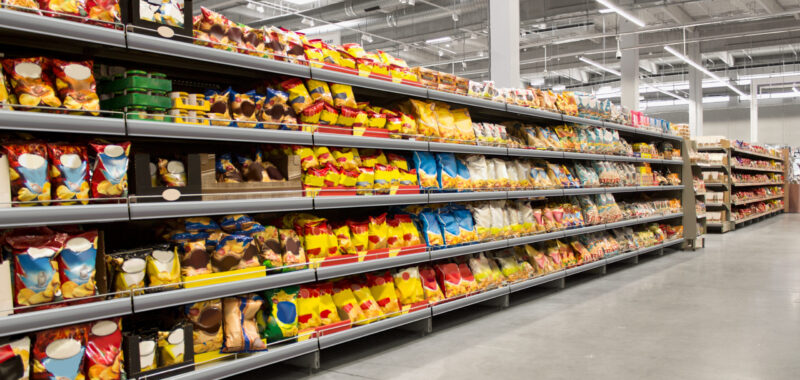PepsiCo (PEP 1.05%) shares have traded in a tight range this year, and there was a muted investor reaction after the company reported its third-quarter results and lowered guidance. Given investors’ non-reaction to the disappointing news, you may wonder if now is the time to buy the stock.
Let’s look at four things investors should consider before jumping in and buying PepsiCo stock.
1. PepsiCo revenue came up short, and guidance was cut again
Overall, PepsiCo’s Q3 results were mixed. Revenue slipped 0.6% year over year to $23.32 billion and was up 1.3% on an organic basis, which removes currency and any acquisitions and divestitures. That fell just short of analyst expectations calling for revenue of $23.76 billion. Adjusted earnings, meanwhile, rose 5% year over year to $2.31. That came in ahead of the $2.29 analyst consensus.
Volumes fell 2% for both its snack and beverage businesses. Quaker Foods saw the biggest volume drop at 13%, due to an ongoing salmonella contamination issue at one of its production plants. Frito-Lay North American volumes, meanwhile, were down 1.5%, while Pepsi North American volumes fell 3%.
For the second time in a row, the company lowered its full-year organic revenue guidance. In the second quarter, it lowered it from growth of at least 4% to approximately 4%, and in this most recent quarter, it took expectations down to low single-digit growth.
2. PepsiCo has a stagnant beverage business
Pepsi has long been the No. 2 soda brand after Coca-Cola, but it recently lost that second-place ranking to Dr Pepper in the U.S. this year. While Pepsi has largely been stagnant, Dr Pepper has gained market share with new flavors and marketing that has resonated with younger consumers.
PepsiCo’s stagnant beverage performance could continue to be seen in Q2, where volumes fell 3% in North America and it saw a 1% increase in organic revenue. The company did say, however, that Pepsi delivered solid revenue growth, led by double-digit revenue growth from Pepsi Zero Sugar.
Meanwhile, it called out Gatorade and Propel as helping lead the beverage category. Gatorade sales rose by mid-single digit percentages and gained market share, while Propel sales climbed by double digits.
However, the company said it is seeing weakness at convenience stores, which is hurting sales, especially in the energy drink category. It thinks this reduced convenience store traffic is largely due to a cautious consumer as a result of the economy.

Image source: Getty Images.
3. Snacks are viewed as the key growth driver for PepsiCo
PepsiCo’s snack business has been a growth driver for the company until recently. Last year, its Frito-Lay North America unit grew revenue by 7%, and in 2022 it saw revenue surge by 19%, largely on the back of price increases. However, revenue has been flat this year and down 1% in Q3.
Despite this year’s lackluster growth, PepsiCo still views the category as its main future growth driver. It has made a number of investments and innovations that it believes will help drive more substantial growth next year. This includes some “more permissible” options like slightly salted and baked potato chips, as well as leaning in with larger value packs during football season with Doritos and Tostitos.
Overall, the company believes that Gen Z snacking and food patterns of eating mini meals bode well for its longer-term growth. It also continues to invest in more healthy offerings such as Sunchips, Simply, and PopCorners, and multicultural offerings, especially targeting the growing Hispanic population in the U.S.
4. PepsiCo’s valuation is fair
PepsiCo currently trades at a forward price-to-earnings (P/E) ratio of under 20 based on next year’s analyst estimates. That’s below the 22 times to 24 times forward P/E multiple it has typically traded at in the past few years.

PEP PE Ratio (Forward 1y) data by YCharts.
With a valuation below recent historical levels, the key for the company moving forward is reaccelerating growth in its snack business. The company looks like it has a solid plan in place, although it likely will not have the same pricing power as it has had in recent years. This was a big benefit for a lot of consumer goods companies, but people have now become more fatigued with price increases and have pushed back.
Given that lack of a pricing catalyst, I think the stock looks pretty fairly valued at the moment. Investors get a solid company with a nice 3.2% forward dividend yield, but its stock price could remain range-bound for a bit.

